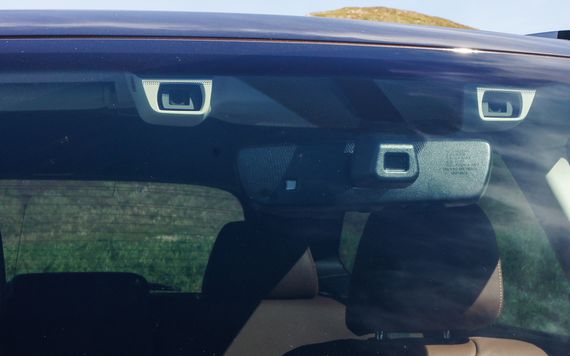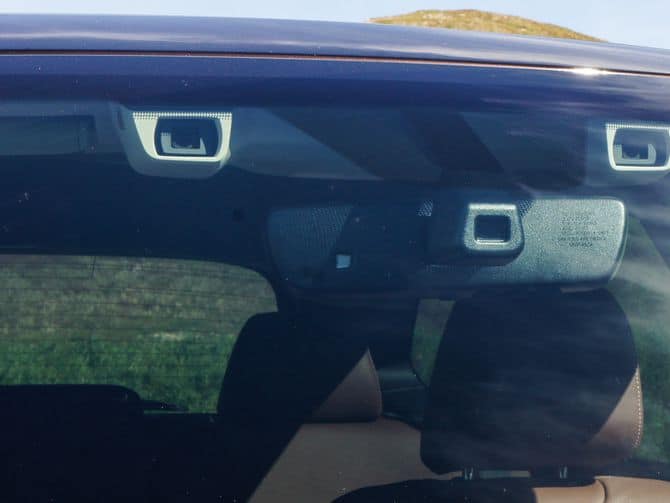
Subaru equips its cars with a stereo camera system it calls EyeSight, which enables automatic emergency braking and adaptive cruise control.
Wayne Cunningham/CNET Roadshow
The advent of new technology in cars, from 4G-connected navigation to driver assist systems, is opening up new opportunities beyond traditional automotive equipment suppliers. While the LG brand has appeared on a wide array of consumer electronics, the Korean company is now branching into automotive.
LG, along with partners NXP, a chipmaker, and Hella, an automotive camera specialist, came up with a new automotive vision platform designed to detect objects and hazards in the driving environment, potentially preventing collisions.
The partners tout their new vision platform as being open, as compared to proprietary systems in use by many automakers today. As for implementation, all the companies would say at this time is that a major European automaker has already adopted the platform.
Advanced driver-assist systems (ADAS) are becoming increasingly common. These systems usually consist of a sensor, such as camera or radar, that detects potential collisions. The systems either alert the driver, automatically apply the brakes, or both. These systems are also a precursor to the more sensor-heavy systems that will be needed to enable self-driving cars.
This new automotive vision platform relies on a camera mounted behind the windshield, near the rear view mirror. With its processor, it can identify bicyclists and pedestrians and automatically hit the brakes. The system can also read road signs, alerting drivers to stop signs and speed limits, and see lane lines, warning of vehicle drift.
Late in 2017, NXP and Hella announced what the companies called an “open vision platform for autonomous safe driving,” with Hella supplying cameras and NXP supplying chips that could process the imagery. The addition of LG adds further image processing expertise.
LG also announced last year it was offering OLED tail light technology to automakers, a type of tail light that would use less energy and potentially be more durable programmable than current tail light systems. The vision platform gives it another entry point into being an automotive equipment supplier.

